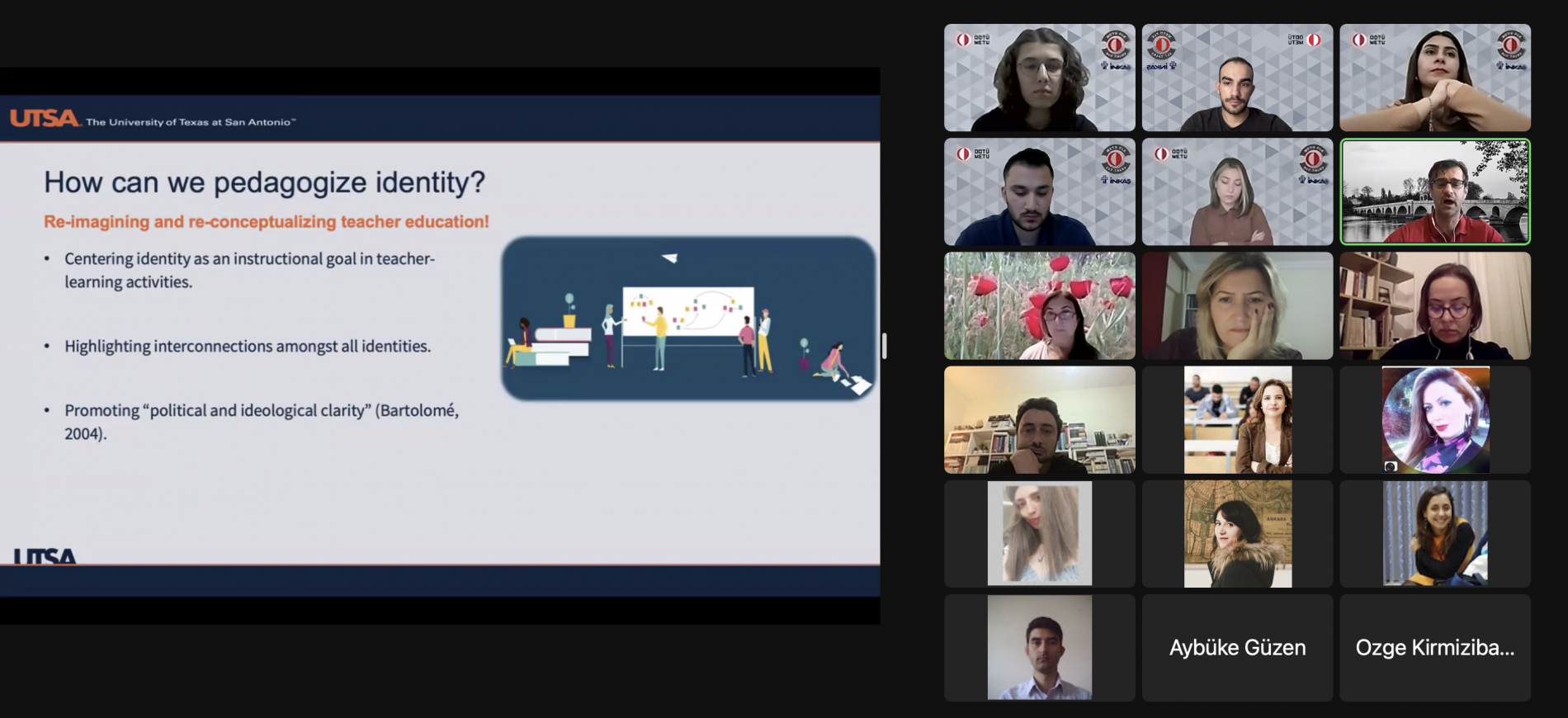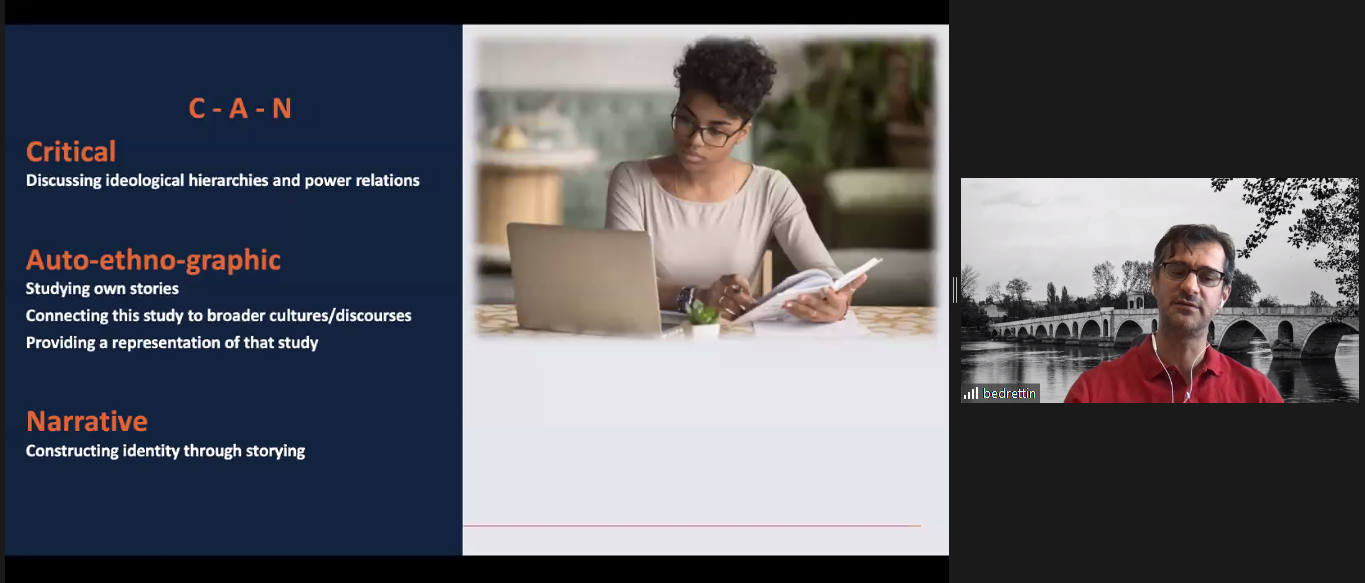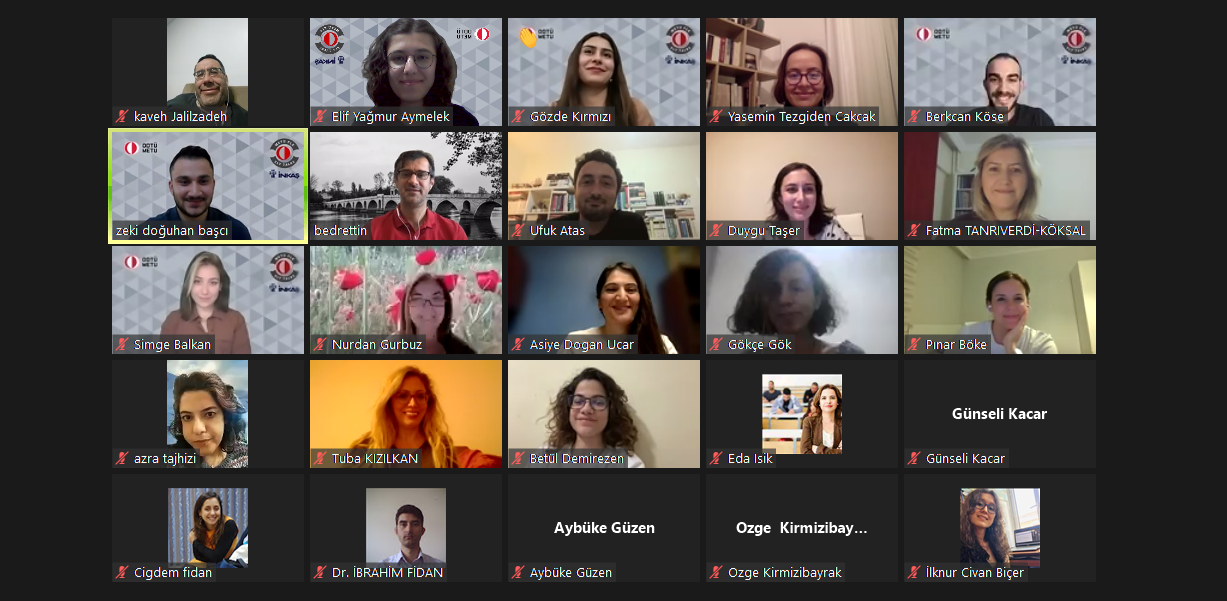Session notes:
"Let's begin with the direct mention of our keyword: Identity. If we were to define it literally, we could say it is the fact of being who or what a person or a thing is. Yet, we can all immediately agree that it actually goes beyond its definition. It makes us unique; it is the core of our goals and dreams, who we are, and who we want to become. As language teachers, we are familiar with many terms and concepts, yet identity is such a critical one that we tend to forget its connection to learning and teaching. For our 16th session, dear Assoc. Prof. Dr. Bedrettin Yazan was with us to share his inspiring insights regarding the importance and use of identity in language teaching.
Yazan started with some of his personal beliefs and values about the matter. He mentioned, "Learners' lived experiences and identities should be foregrounded in teaching." He added that no learning journey is perfectly organized and smooth; learning is messy, complex, and unique. Therefore, we should not separate our identities from language learning since language's personal, professional, and political aspects are inseparable. We are all unique learners; therefore, our individual differences, such as our identities, can be a part of our learning journey. In addition, tensions are not something we should avoid, ignore, or fear as they provide new dimensions for us to understand our identity work. Critical analysis, in that matter, is a valuable tool that students can and should rely on since they can engage with it at any level, according to Yazan.
When it comes to utilizing identity, looking from both the perspectives of learners and teachers is essential. An excellent quote Yazan shared from Hamachek (1999) can convey this significance in the best way possible: "Consciously, we teach what we know; unconsciously, we teach who we are."
When we are assured of the importance of identity for both learners and teachers, the next step is to pedagogise it. Yazan names this process "re-imagining and re-conceptualizing teacher education," as he suggests specific strategies, such as centering identity as a central goal in the act of teaching, highlighting interconnections between different identities to highlight diverseness, and examining the tensions/contradictions. Additionally, he introduced a method of his own called CAN, aka Critical Autoethnographic Narrative. Each letter stands for a critical part of the process, as C stands for Critical, where ideological hierarchies and power relations are discussed. Secondly, A is for Auto-ethno-graphic, which includes the learner studying their own stories, connecting them to broader cultures/discourses, and providing a representation of their study. As for the final letter, N represents constructing an identity through storytelling.
Through identity and storytelling, Yazan emphasized the importance of the dynamic relationship between the past, present, and future. He conveyed his opinion that learning to teach is a dynamic process with a wonderful quote from Britzman (2003):
"...learning to teach is not a mere matter of applying decontextualized skills or mirroring predetermined images; it is time when one's past, present, and future are set in dynamic tension. Learning to teach – like teaching itself – is always the process of becoming: a time of formation and transformation, of scrutiny into what one is doing, and who one can become."
Throughout the session, Yazan shared powerful and creative activities to integrate identity; the first was making identity posters. The main task was asking teachers to create a poster to portray the kind of teacher they would like to become to serve language learners in their context. Yazan also shared some example posters where it was visible that this activity not only encourages teachers to discover themselves as educators but also helps them grow as a community, learn, and help one another as they have the opportunity to reflect on themselves.
Another activity concept was digital language stories. It is a way to "re-remember past for present identity," according to Yazan's words. Learners are asked to analyze past and recent experiences as language learners, users, and teachers. Throughout the weeks, there are multiple installments and individual feedback is followed afterward to provide scaffolding. The overall process starts with writing all the stories, followed by receiving feedback, adding multimodal data, selecting a theoretical framework, completing the analysis and finishing with the presentation. One of the most inspiring parts of Yazan's methods was that he already implemented them for several semesters throughout different years, especially for courses such as Linguistics or Second Language Acquisition, where their connection with identity can be challenging to realize initially. Nevertheless, the results speak for themselves, as Yazan shared some of them, where the teachers were quite eager to discover more about their identities.
In a nutshell, Yazan mentions how pedagogising identity opens an experiential space for teachers and teacher educators' transformative growth, empowers them to engage in purposeful identity work, develop their lens of identity, and gain critical awareness about the role of ideologies in teaching.
In this long, demanding, yet rewarding path that we all follow as language learners, users, and educators, the more we learn about our identity, the more we can inspire others to discover their own. We would love to finalize with a quote that belongs to one of the teachers who was a part of one of the implementations of CAN that Yazan shared with us: "Teacher identity in itself is not static; it is ever-changing, and thus, the discovery never stops."






